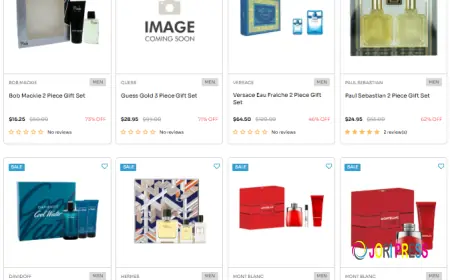How Can Businesses Master RWA Marketing in 2025?

The digital asset industry has been evolving at lightning speed, and Real World Assets (RWAs) have emerged as one of the most transformative use cases in blockchain and Web3. From tokenized real estate and commodities to bonds, equities, and even intellectual property, RWA tokenization is reshaping global finance by bridging tangible assets with decentralized markets. According to industry reports, the RWA market is projected to exceed $16 trillion by 2030, making it one of the most lucrative areas for businesses and investors alike.
However, while tokenizing real-world assets creates new opportunities, building awareness and adoption requires more than just a strong product. Effective RWA marketing is the cornerstone of trust, growth, and long-term success. In 2025, with increasing competition, changing regulations, and a more educated investor base, businesses must craft marketing strategies that highlight transparency, compliance, and value.
This blog explores in detail How Can Businesses Master RWA Marketing in 2025, from understanding the audience to leveraging AI-driven insights, influencer partnerships, and compliance-first communications. By the end, you’ll gain a roadmap to design a campaign that not only attracts investors but also establishes credibility in one of the fastest-growing sectors of the Web3 world.
Understanding RWA Marketing in 2025
Real World Asset marketing is not just about promoting tokenized products. It is about building confidence and utility around assets that people already know and value in traditional markets. Unlike purely digital tokens, RWAs represent tangible and regulated value be it real estate, government bonds, carbon credits, or fine art.
In 2025, RWA marketing must focus on three essential pillars:
-
Education – Explaining the mechanics of tokenization, ownership rights, and security to both retail and institutional investors.
-
Trust – Showcasing compliance with financial regulations and ensuring transparent governance.
-
Accessibility – Communicating how tokenized assets can be easily accessed, traded, and integrated into portfolios.
The biggest challenge is not hype but bridging traditional finance (TradFi) with DeFi. Investors must feel secure knowing that their tokenized assets are backed by real-world collateral, audited systems, and legally compliant structures.
Setting Clear Goals and KPIs
The first step in building an effective RWA marketing campaign is setting clear objectives. Unlike traditional crypto marketing where hype and speculation drive engagement, RWA marketing should be grounded in measurable business goals.
Some key objectives might include:
-
Awareness: Educating investors about your platform’s role in tokenizing real assets.
-
Trust-Building: Highlighting compliance, security audits, and partnerships with financial institutions.
-
Lead Generation: Attracting accredited investors, asset managers, or retail participants.
-
Conversion: Encouraging investment, trading, or participation in tokenized asset offerings.
-
Retention: Keeping existing investors engaged through updates, governance participation, and loyalty rewards.
Each objective must be supported by KPIs such as:
-
Website traffic from institutional audiences
-
Social media engagement with thought-leadership content
-
Number of accredited investor sign-ups
-
On-chain metrics like tokenized asset adoption and liquidity
-
PR mentions in financial and mainstream media
By setting measurable goals, businesses can track progress and fine-tune strategies instead of relying on vanity metrics.
Audience Segmentation for RWA Campaigns
RWA campaigns must address multiple investor personas, unlike meme coins or DeFi projects that primarily target retail traders. These include:
-
Institutional Investors – Hedge funds, private equity firms, and asset managers looking for tokenized alternatives.
-
Accredited Investors – High-net-worth individuals seeking fractional ownership of assets like real estate or art.
-
Retail Investors – Everyday participants who may invest smaller amounts but contribute to community building.
-
Corporate Clients – Businesses looking to tokenize their balance sheet assets or sustainability credits.
-
Regulators and Partners – Stakeholders who need to see compliance-driven messaging.
Each group requires different content, tone, and channels. For instance, institutional investors may prefer in-depth research reports and webinars, while retail investors engage more with educational videos, social media threads, and simplified explainers.
Building Trust Through Compliance Marketing
In 2025, compliance-driven marketing will be the foundation of any RWA campaign. Governments and regulators across the US, EU, and Asia have started defining frameworks for tokenized securities and digital assets.
A powerful RWA marketing campaign should highlight:
-
Licensing and Registration – Demonstrating legal recognition of the platform.
-
Audits and Transparency – Regular proof-of-reserve and third-party verification.
-
KYC/AML Integration – Showcasing investor security through strict verification systems.
-
Regulatory Partnerships – Collaborations with banks, custodians, and financial institutions.
This builds credibility not only with investors but also with regulators who may scrutinize campaigns for compliance. Marketing content should avoid exaggerated claims and instead focus on verifiable proof.
Crafting a Strong Educational Content Strategy
Education is one of the most powerful tools in RWA marketing. Since tokenization is still a relatively new concept, businesses must simplify complex ideas for different investor levels.
Some strategies include:
-
Whitepapers & Research Reports – In-depth analysis of tokenized markets and benefits.
-
Explainer Videos & Infographics – Simple, engaging content for retail audiences.
-
Webinars & AMA Sessions – Interactive platforms for direct engagement with investors.
-
Blog Articles & Case Studies – Showcasing successful implementations and ROI.
-
Email Newsletters – Providing curated insights on RWA adoption trends.
In 2025, AI-driven content personalization will allow businesses to deliver tailored educational journeys, where an institutional investor may receive research-heavy content, while a retail user gets simplified guides and tutorials.
Leveraging Community Building and Social Platforms
Community remains a cornerstone of Web3 marketing, but RWA communities differ from meme coin or DeFi projects. Here, the focus is on thought leadership, credibility, and networking.
Key approaches include:
-
Telegram & Discord Groups – For community discussions, investor updates, and governance participation.
-
LinkedIn & Twitter (X) – Targeting professional investors, regulators, and financial experts.
-
YouTube & Podcasts – Sharing interviews with industry leaders and RWA case studies.
-
Reddit & Medium – For long-form educational content and discussions.
Building a professional yet approachable community ensures consistent engagement and long-term loyalty.
Influencer Partnerships and Thought Leadership
Influencers play a major role in Web3, but in RWA marketing, credibility outweighs popularity. Instead of choosing flashy influencers, brands should collaborate with:
-
Finance Thought Leaders – Economists, fund managers, and fintech innovators.
-
Legal Experts – Lawyers specializing in securities and compliance.
-
Crypto Analysts – Influencers with proven track records in digital assets.
-
Sustainability Advocates – Particularly if tokenizing carbon credits or renewable energy assets.
Guest articles, co-hosted webinars, or advisory board memberships can position a project as a serious market player rather than just another blockchain startup.
Paid Advertising and Performance Marketing
While organic content builds authority, paid campaigns accelerate reach. In 2025, performance marketing for RWA projects must comply with advertising regulations while targeting the right audience.
Channels include:
-
LinkedIn Ads – Best for institutional and B2B targeting.
-
Google Search & Display Ads – Capturing intent-driven investors searching for RWA opportunities.
-
Twitter (X) Ads – Engaging with crypto-native and fintech communities.
-
Podcast Sponsorships – Reaching niche but highly engaged finance audiences.
The focus should be conversion-driven campaigns, not hype. Optimizing ad creatives with compliance disclaimers and transparent messaging is crucial.
Utilizing AI and Data-Driven Marketing
AI is revolutionizing how campaigns are managed. In 2025, AI-driven marketing tools will help optimize RWA campaigns by:
-
Predicting Investor Behavior – Using machine learning to understand user intent.
-
Personalizing Content – Delivering custom emails, guides, and offers.
-
Analyzing Sentiment – Tracking investor discussions across forums and social media.
-
Optimizing Paid Campaigns – Real-time bidding and budget allocation for maximum ROI.
Data-driven insights will allow marketers to target investors with precision while ensuring compliance with privacy and financial advertising regulations.
PR, Media Coverage, and Event Marketing
Public relations and thought leadership are indispensable in positioning an RWA project as trustworthy. Getting featured in top-tier outlets like Bloomberg, CoinDesk, Financial Times, or Forbes adds unmatched credibility.
Additionally, Web3 and fintech conferences like TOKEN2049, Consensus, and Davos have become hotspots for RWA discussions. Hosting panels, sponsoring events, and delivering keynote speeches establish the brand’s voice in the global arena.
Press releases should highlight strategic partnerships, compliance achievements, and successful tokenized asset launches rather than speculative narratives.
Post-Campaign Analytics and Continuous Optimization
A powerful RWA marketing campaign doesn’t end with launch—it evolves. Post-campaign analysis should focus on:
-
Investor Conversion Rates – How many leads turned into token holders.
-
Engagement Metrics – Content shares, downloads, and watch times.
-
Community Growth – Active participation in governance and discussions.
-
Liquidity & Trading Volume – Performance of tokenized assets in secondary markets.
-
Reputation Tracking – Monitoring sentiment across news and social platforms.
Continuous optimization ensures the campaign adapts to investor needs, regulatory changes, and market trends.
Conclusion
Building a powerful RWA marketing campaign in 2025 requires more than flashy graphics or influencer hype. It demands a balance of compliance, trust, education, and innovation. By clearly defining goals, understanding diverse investor segments, and leveraging AI-driven insights, businesses can stand out in an increasingly competitive market.
As tokenization transforms real estate, commodities, and financial instruments into blockchain-based assets, marketing becomes the bridge between traditional finance and Web3. A successful campaign will not only attract investors but also build confidence in the tokenized future of global markets.
What's Your Reaction?
 Like
0
Like
0
 Dislike
0
Dislike
0
 Love
0
Love
0
 Funny
0
Funny
0
 Angry
0
Angry
0
 Sad
0
Sad
0
 Wow
0
Wow
0


















































